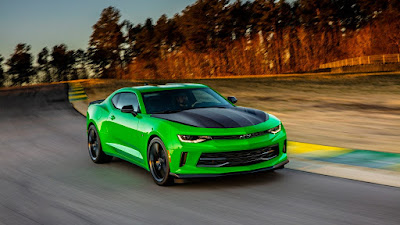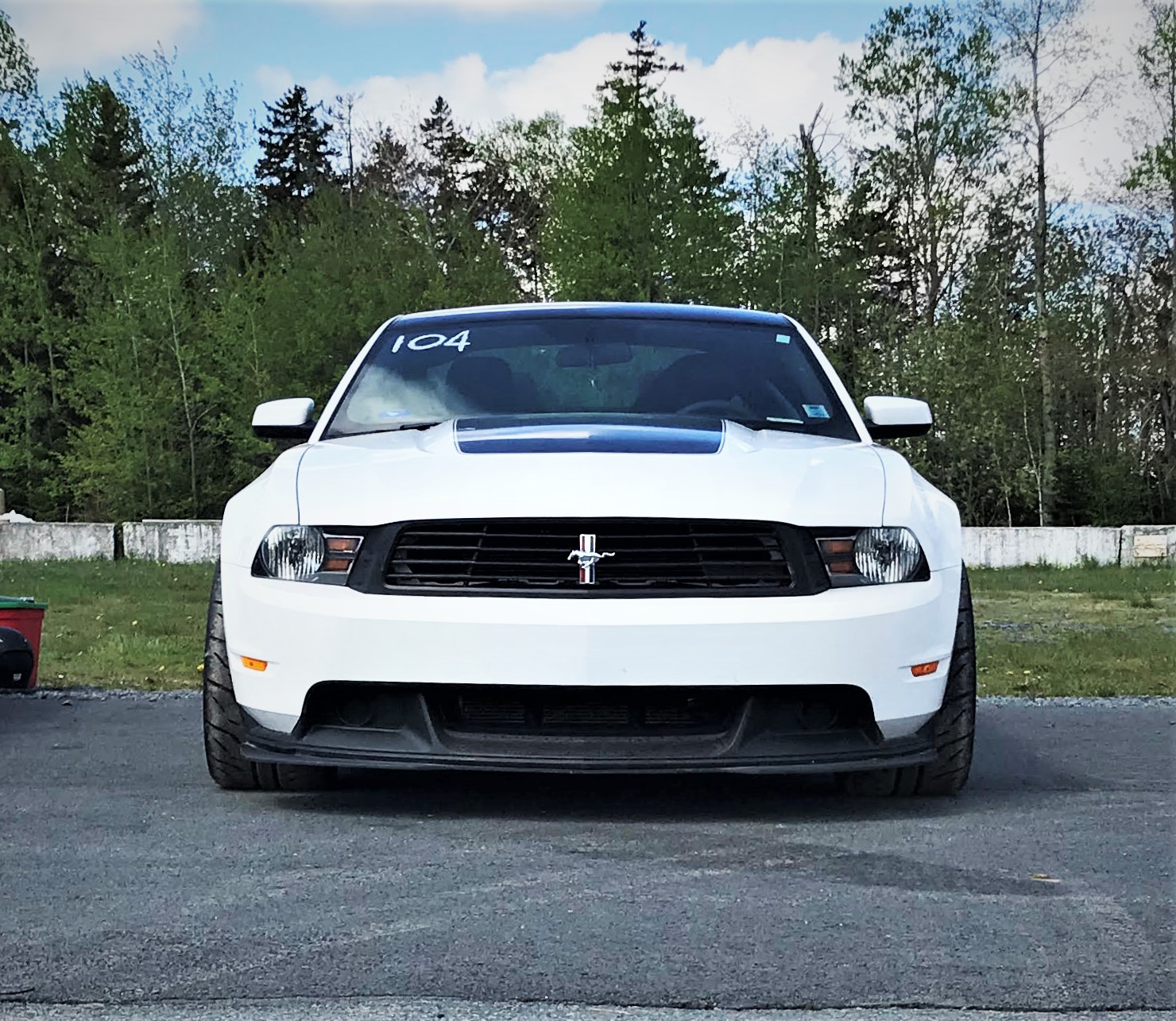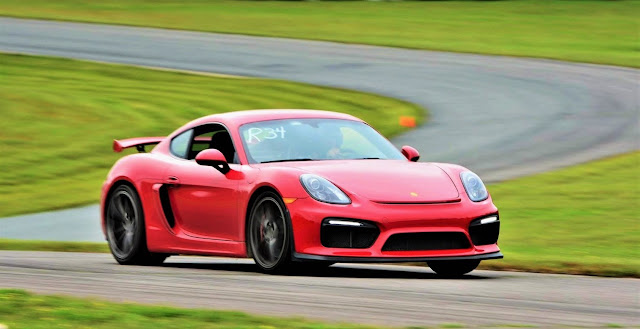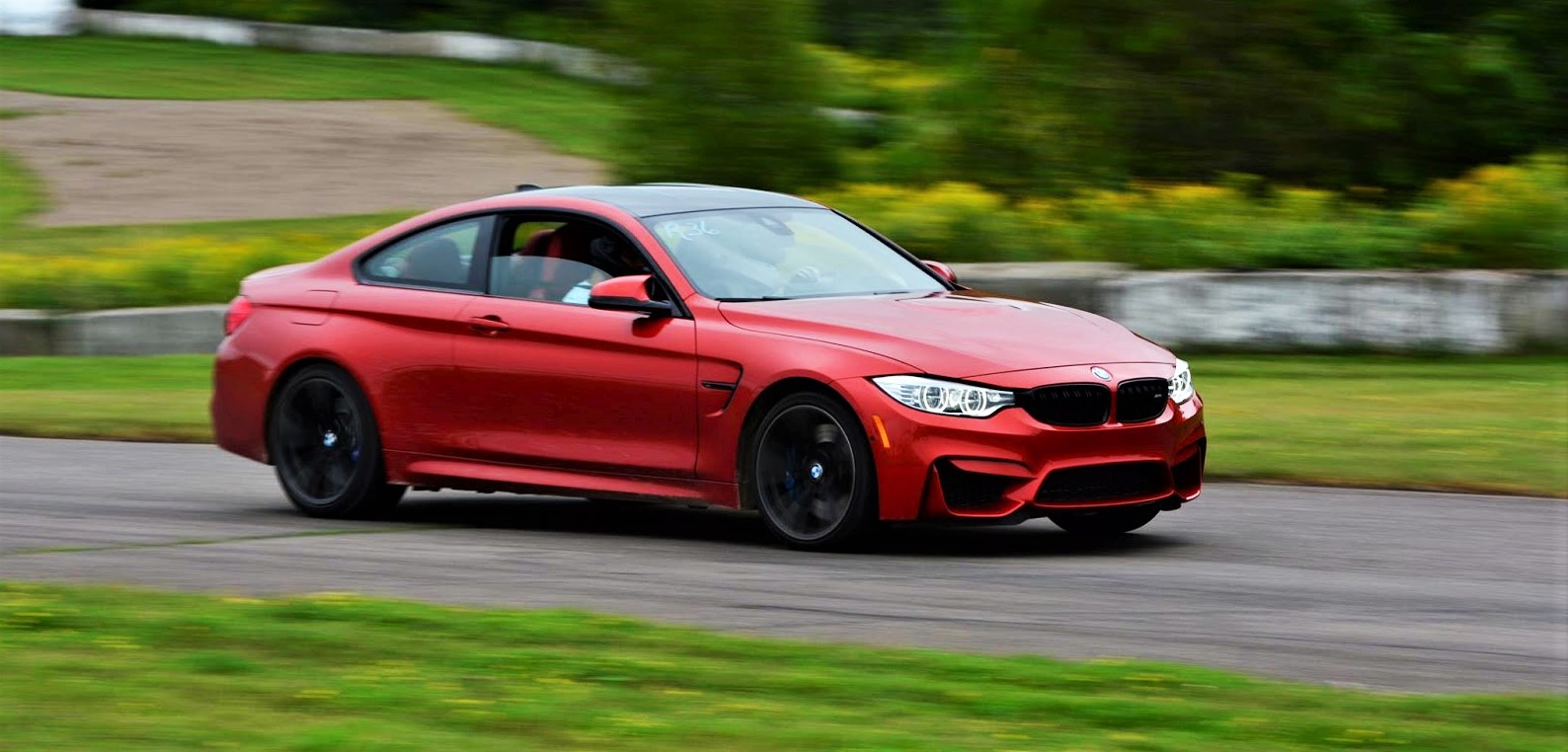Where did the time go? I unfortunately missed last year's feature. I did intend to post about it this year but haven't had the chance and it's already time for this year's feature. I thought I'd get this one done first and then go back to last year's (hopefully). The full article for this year's LL is here: Car and Driver - Lightning Lap 2016. As always, my car picks aren't necessarily very quick or slow. They simply did much better or much worse than I excepted them to.
The Highs
BMW M2 - 3:01.9: Last year, a BMW M4 did 3:00.7. 1.2 seconds is all that separate the iconic M4 (an M3 coupe, really.. doesn't that sound better?) from this M2. And that one had the dual clutch transmission and carbon ceramic brakes. Opt for the manual, and you could very well be neck and neck. But you save *ahem* about $30,000 in the process, a little more if you're in Canada. That's what you need to get an M4 with the competition package, dual clutch auto, and carbon ceramic brakes. The M2 is also lighter and seems to be hailed as the true spiritual successor to the BMW 2002. The lack of carbon ceramic brakes is not only impressive, but will also make it much cheaper to run at the track. If you want the best BMW M track car, this is the one to get, not the M4.
Chevy Camaro LT 1LE - 3:04.0: I don't know if I should be surprised. Year after year, the GM team has been destroying expectations of how much track performance you can get for your money. Sure, the Corvette has always been a bargain for what it offered but that's a low, lightweight, two seater, purpose-built car.
Both 1LE Camaros are knock outs in their own rights and class, but the V6 has more of a David-and-Goliath story to tell. Both cars are huge value and underpowered compared to most of the cars they beat or run with, but the other one has an SS badge and V8 noise and power. This is "just a V6 Camaro." And it is one tenth of a second behind a 2012 Porsche Cayman R. Think about that for a bit. It beats heavy hitters like an Audi RS5, BMW M5, last generation TT RS and, embarrassingly, a current Mustang GT PP. As Car and Driver has been saying for a while now about the 6th gen Camaro; there is no longer shame in buying the V6.
Both 1LE Camaros are knock outs in their own rights and class, but the V6 has more of a David-and-Goliath story to tell. Both cars are huge value and underpowered compared to most of the cars they beat or run with, but the other one has an SS badge and V8 noise and power. This is "just a V6 Camaro." And it is one tenth of a second behind a 2012 Porsche Cayman R. Think about that for a bit. It beats heavy hitters like an Audi RS5, BMW M5, last generation TT RS and, embarrassingly, a current Mustang GT PP. As Car and Driver has been saying for a while now about the 6th gen Camaro; there is no longer shame in buying the V6.
Chevy Camaro SS 1LE - 2:54.8: I'm
looking at this a little differently. You want phenomenal value in a
track car, you buy a Camaro 1LE. Chevy will generously let you choose
two engine options, depending on your thirst for power and the level of
car you want to embarrass, although it'll probably really depend on how
deep your pockets are. Not a single car that beat either Camaro costs
less. It's not possible to go faster for less (off the showroom floor).
The SS? Well, that beat the R8 V10 Plus that ran with it this year and
was less than a second behind a Cayman GT4.. the GT4. That's despite the
Camaro having worse power to weight ratio, weighing around 700 lbs
MORE, AND having less sticky Goodyear Eagle F1 Supercar tires vs
Michelin Pilot Sport Cup 2's. Swap the tires, and the Camaro is ahead, I have no doubt, despite the weight and power to weight ratio. Unbelievable. Stay tuned
for an upcoming post on how GM works its track magic!
The Lows
The Lows
Acura NSX - 2:50.2: Three electric motors, mid-engine layout, aluminum and carbon fibre space frame, twin turbo V6, Pirelli Trofeo R tires.. what am I missing? Oh yes, a nearly $200k price tag. The last NSX was well under $100k when it came out. After accounting for inflation, or if you compare to how much cheaper it was than other cars that are still in production (i.e. a 911 turbo, a comparable Ferrari, etc.) or more expensive (i.e. a Corvette or a Viper), this car should cost about $60k less. What do you get for the added money? It's certainly not performance. This car will get beat by a now out of production Ferrari 458 Italia. I remember reading somewhere that this was one of their benchmarks during development. I always assumed that they were referring to driving experience, not performance.. The 911 GT3 (non RS) is two tenths of a second slower. That's zero point two. And it is about $60k less. Since when does a special track edition Porsche qualify as good value? It now does, thanks to Acura.
I get this car, despite how harsh I am. It is a step in the direction of less reliance on gas. The way to look at it is that it is showing us the future can still be fast and fun, despite (some) electrification and hybridization. In day to day driving, it should be more efficient than a GT3 but you give up no performance at the track. But, because of the price, the target buyer isn't buying to save on fuel costs so you buy it because you want to make a statement or you truly care and think it will make a difference. If you are in that latter group, thank you for being the early tech adopter, even though it doesn't make sense on paper, to allow automakers to develop them. Otherwise, there are far more exciting cars for the money that give up nothing in performance, some of which also beat the Acura for far less.
BMW M4 GTS - 2:52.9: Unlike the Acura, this has no excuses. Why doesn't this match the GT350 or Z/28? Why is it over 1 second and 2 seconds slower than those cars? It has half a cage, power turned up to nearly 500 hp, big sticky Michelin Cup 2 tires, functional aero upgrades, and costs more than twice as much as a base M4. All of that adds up to the impression that BMW left no stone unturned. I'm left with only one conclusion; BMW cannot make it quicker. They either need wider tires and/or track but couldn't fit them in the fenders, more power but the transmission, axles, or diff couldn't take it, or stiffer suspension but it was determined to be too stiff for the street, or something else. I really don't like to judge a car by performance on only one track and I expected it to do better at Laguna Seca with Motor Trend, but *SPOILER ALERT* it was only slightly quicker on LS than a Z/28 (less than two tenths is the difference) but slower than a GT350R. Is this the best BMW can do?
Lexus GS F - 3:05.9: This shouldn't really be listed because I (and you should've) more or less expected it to put a time right around what it did, basically tying the RC F from last year that has basically the same drivetrain, including torque vectoring diff, and weighs basically the same. I couldn't help but shake my head, though. Forget the heavy hitters like the CTS-V and E63 AMG S, with times of 2:56.8 and 3:00.1. Why couldn't this beat a humble 2015 Mustang GT that also has a naturally aspirated 5.0 litre V8 that so happens to be more than 30 hp down on power?
I think Lexus is hoping people compare this car to the competition from Cadillac, Mercedes, and BMW much like comparing a Cayman to a Corvette. The Cayman is supposed to be more focused on driving while the Corvette is more focused on performance. Trouble is, while the Cayman can make a huge statement for itself due to lighter weight, mid engine layout, and more direct feel, this car offers nothing for a purist beyond a naturally aspirated engine. But even that, they took and dulled by a comfort-oriented transmission tuning. No manual, DCT, or at least a more crisp and quicker shift map for the transmission.
I think this car doesn't know what to be. Lexus probably couldn't afford to delay it until they develop a boosted unit so they gave it the older N/A one (albeit, with updates). That means they couldn't compete on raw numbers so had to make sure it's more comfort oriented in suspension and transmission tuning. That isn't a cool selling point in this segment, though, so they tried to sell it off as more of a "purist" choice because of the N/A engine. It's a half-hearted attempt that only exists because they needed a GS F, in my opinion. I'm typically a sucker for a good naturally aspirated V8. Here, though, I can't help but ignore it, because the looks say it's trying (far) too hard while the rest of the car says it's not trying hard enough and the price.. that is just screaming: there are far better options!
Tesla Model S P85D - 3:17.4: A humble FWD, 4 cylinder turbo Focus ST is but two tenths of a second behind this. The Focus is more or less 3 seconds slower to 60 mph and to cover a 1/4 mile, and it's also laughably traction limited, being FWD with an open differential (and only brake-based limited slip programming) vs this mighty multi-electric-motor AWD Tesla. I admit, it's very cool to keep giving this car more power and better launch programming to see how quick it can go from 0-60 mph but the fun AND shock of it is getting old. I hope Tesla starts putting some money and effort into developing a proper battery pack with cooling that can allow the battery to function at peak despite track abuse. This slow time was even despite having part of the lap (first 40 seconds) with full power before battery protection kicked in. Imagine a second, full lap, entirely with reduced power. Tesla gave us the first long range car, charging infrastructure, and good, desirable performance, but all is moot so far for the large (and growing) market of track-day enthusiasts around the world.
Where is my car??
You might be wondering where some cars are or why they didn't make the list. A couple were close calls for me so I thought I'd mention them.
Focus RS - 3:03.9: The RS put down a blistering time and most people probably were expecting to read it in the high list or were at least surprised by the time. I, too, was very surprised at first, then I saw it was done on the optional Michelin Pilot Sport Cup 2 tires. It's hard to say what those are worth but 3-5 seconds seem reasonable to me on a track of this length. Half way in the middle, 4 seconds, would give this car a time of 3:07.9 about 2.5 seconds quicker than an STI. That's very good and, as a Ford fan, I couldn't be happier that it's the quickest car in the segment, and by a large margin, but we already knew it handles better, has more power, and better power distribution bias, so that's more or less where you'd expect it.
Shelby GT350R - 2:51.8: I was disappointed when I first read this, because it couldn't beat the last generation Z/28. I was planning to put it under The Lows. Then I started to read more. The Shelby and Corvette Grand Sport have the same model Michelin tires. However, they found those on the Grand Sport to be more peaky, with great grip for a few laps, and then grips falls off slightly as they get hotter. There is nothing wrong with that. Most tires are like that. You always expect to lose some grip when the tires get hot. In fact, the ones on the Vette were actually good because the tires were very consistent after giving up some edge. The interesting thing, though, is that the Shelby-specific tires were designed to have more longevity than ultimate grip, and the tires never seemed to lose any grip as the laps piled on. This is not only very useful, but also refreshing - to see an automaker committed to something you will probably see very little promotion on (besides Ford advertising they're Shelby-specific spec) but a serious driver will appreciate. And that something could hurt lap times, the one thing most people will remember and reiterate, for the sake of having a more consistent and confident inspiring car. Moreover, as I said under the M4 GTS, when cars are this close in performance, you can't judge based on lap times on only one track and, as you may have read, Motor Trend's Best Driver's Car results are published and *SPOILER ALERT* they're different and the 350R does beat the Z/28 by about a second and a half.
Corvette Grand Sport - 2:47.1: This is more or less the same story as the Focus RS. It seems like a surprising time at first, but then you think about it, and it makes perfect sense - much bigger and stickier tires, upgraded suspension, and more downforce. It sits between the Stingray Z51 and the Z06 in terms of lap times, although it's much closer to the Z06 - 6.7 seconds faster than the Z51 and only 2.5 seconds slower than the Z06 - while being much closer in price to the former - about $11,000 more expensive than the Z51 and $18,000 less than the Z06. But it is justified because, with the Grand Sport, you only get the track performance but not the power. With that said, with apologies to the overlords of automotive power, you don't want the extra power here.. If the Z06 were still naturally aspirated, sure, but I will always prefer a naturally aspirated engine on track than otherwise. And you'll give up very little comfort, thanks to the excellent magnetic shocks and dual mode exhaust, but gain so much in performance. This is basically tying a Porsche 911 GT3. The RS one - costing two and a half times as much, producing 35 more hp, and weighing about 350 lbs less. Both have sticky track-oriented tires and real aero-improving parts. The Corvette does more with (a lot) less. And it's a V8 with a manual..






















Comments
Post a Comment